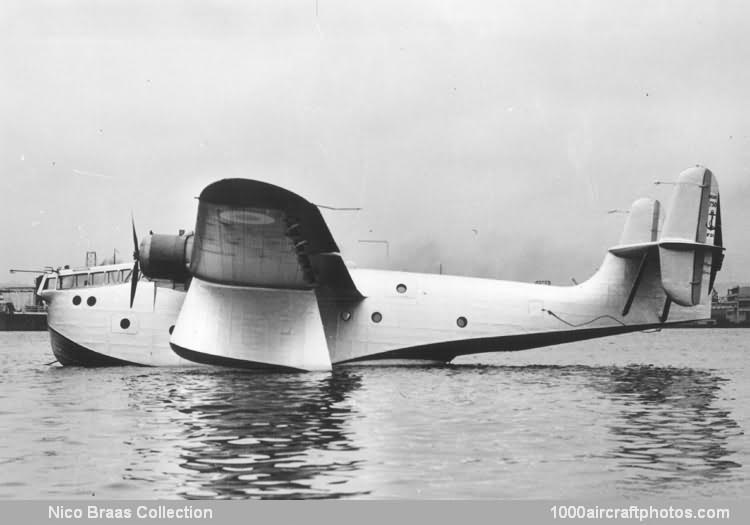The Br 730 was a modification of the Br 710, a large gull-wing monoplane but changes in the specification announced in December 1935 necessitated extensive redesign in order to meet the new requirements. The structure was simplified, the gull configuration of the wing was eliminated, and gross weight was increased to twenty-three metric tons. The Br 730 prototype construction began in October 1936.
The box-spar wing, which housed 4,873 gal (18,450 l) of fuel, incorporated a tunnel in the leading edge through which the flight engineer could reach the engines in flight, and was built at Villacoublay, and the hull, floats and tail assembly were built at Le Havre. Engines one and three were fourteen-cylinder air-cooled radial Gnome & Rhône 14N-2s; while two and four were 14N-3s with airscrews rotating in the opposite direction, these being rated at 1,010 hp at 4,921 ft (1,500 m).
Proposed armament comprised a 0.984 in (25 mm) cannon in a turret above and aft of the flight deck, and five 0.295 in (7.5 mm) Dame machine guns firing through two portholes beneath the flight deck, two portholes immediately aft of the wing, and a ventral trap aft of the rear step. Additional four 441 lb (200 kg) bombs could be carried.
The prototype, the Br 730-01, flew for the first time on April 4, 1938, at Le Havre. A little more than three months later, however, on July 16, 1938, the prototype was disemboweled when its pilot inadvertently landed the aircraft in shallow water. Despite this accident, a contract was placed for four production machines early in 1939, and in the following September this was augmented by a further contract which called for unlimited production of the flying boat.
In the spring of 1940, it was decided that, as the flying boat would be operating for the most part outside the range of land-based fighters and losses should therefore be low, the planned production rate would be reduced in order that Breguet could devote more energy to the manufacture of more urgently needed combat types. At this time, hull production had been initiated at the Toulouse-Montaudran plant of the Latécoère company, at that time an associate of Breguet. The production hull differed from that of the prototype in minor respects only, and four were virtually complete when the capitulation of June 25, 1940, brought production to a halt.
Production was resumed on behalf of the Vichy government in 1941, and during the following year the hull of the first production machine and the salvaged wing of the prototype were transported to the Berre naval air station where they were mated to result in the Br 730 No. 1. Powered by four 1,120 hp Gnome & Rhône 14N 44/45 engines, the Br 730 No. 1 was ready to fly when German forces occupied Vichy France, thus preventing tests.
In the meantime, production work at Toulouse-Montaudran continued at a tempo sufficiently slow to delay the completion of further machines in case of a sudden Luftwaffe interest in the type, but not so slow as to result in the drafting of the personnel to German factories. Of the eleven hulls that had reached various stages of construction when an Allied air attack seriously damaged the plant on April 6, 1944, three survived. During the last days of August 1944, the retreating German forces sabotaged the Berre naval air station but, fortunately, the Br 730 No. 1 suffered only minor damage, and flight trials began on Berre Lake in December 1944.
Official acceptance trials were completed in mid-February 1945, and the Br 730 No. 1, christened Vega, was delivered to Flottille 9FTr. One of the three hulls that had survived the bombing attack was eventually transported to Biscarosse for completion as the Br 730 No. 2, christened Sirius, this aircraft flying for the first time in May 1946, and the two remaining hulls were fitted with redesigned fuselage nose, modified floats and 1,350 hp Gnome & Rhône 14R200/201, and completed under the designation Br 731. These were eventually delivered to Escadrille 33S and christened Altair and Bellatrix. These were eventually scrapped, as was also the Sirius, but the Vega crashed in North Africa in December 1948 when serving in the long-range communications role."
The following data relate to the Br 730 No. 1.
